“I Was the Bridge to Our History” an interview with Walter Lange
“I Was the Bridge to Our History” an interview with Walter Lange
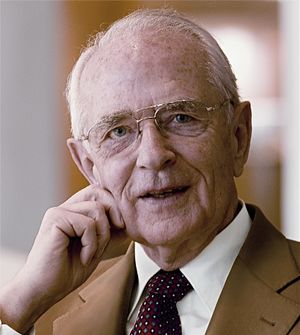
Glashütte, 29 July 2009
On his 85th birthday Walter Lange, founder of Lange Uhren GmbH, looks back on his life's work in conversation with journalist Christoph Scheuring.
Is your 85th birthday an opportunity for you to take stock?
To be honest, my whole life long I’ve lived as if I was going to go on forever. So I see
no reason to take stock at this time.
But no-one lives forever.
Of course, that's right. However, there’s no sense in darkening life by brooding on your
own mortality.
So what do you do instead?
I enjoy my life. Amongst other things, I travel a lot, for instance to the Salzburg Festival.
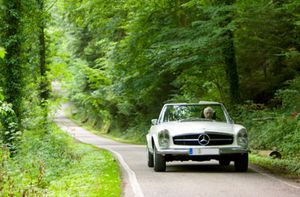
Also, a year and a half ago I fulfilled a long-held dream and bought a 1971 Mercedes
280 SL “Pagoda”, which I have already driven to Lake Maggiore and Glashütte.
Do you still remember the first watch you ever had?
My first watch wasn't from Lange, it was a Cyma from Switzerland. It wasn’t until my
Confirmation that my uncle gave me an O.L.I.W. (Note: Original Lange International
Movement). O.L.I.W. was the less expensive line at A. Lange & Söhne.
Do you remember the Great Crash of 1929?
Even in Glashütte there were clear signs of the Depression. I remember the many unemployed people who used to congregate opposite our head office. The worst fear of my parents was that they might be forced to lay off people. We therefore asked our watchmakers to come into the manufactory at least for a few hours even when there was not much work for them.
Has this period shaped your view of business in any way?
It not only shaped me. The re-establishment of our manufactory would have taken a somewhat different course without this experience.
Can you explain that in a bit more detail?
When the Berlin Wall fell in 1989, it wasn’t just a case of wanting to revive the name of A. Lange & Söhne. Above all, I wanted to provide the people of Glashütte with hope for the future.
At that time VEB Glashütter Uhrenbetriebe, into which A. Lange & Söhne had been compulsorily merged, was still in existence.
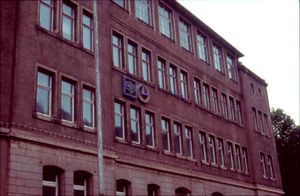
As soon as I visited the company, it was clear to me that it would not survive in the free market economy. If we had attempted to restore this company to profitability, we would have had to start with mass lay-offs. That would have been inconceivable for me. For this reason I founded the Lange company for a second time with my partner Günter Blümlein.
Did you ever have any doubts as to whether you would succeed in constructing a genuine Lange watch for modern tastes after the company had lain dormant for 40 years?
Not for a second.
Would you agree with the view that it is dissatisfaction that drives people to higher and higher standards of excellence?
I think it is the confident belief that we can extend our own limits that does not allow us to rest.
Where did your confidence come from in the early years of re-establishing the company?
My partner Günter Blümlein certainly played a large part. Blümlein knew how to make watches and how to lead people. He was an outstanding manager and strategist. He was also an expert in marketing and understood the A. Lange & Söhne brand. I have never before met a man who combined so many talents.
Where did you meet for the first time and what happened then?
Our first meeting was at my house in Pforzheim where we agreed on the reestablishment of the A. Lange & Söhne brand. I then decided to do it on 7 December – the same day as my great-grandfather Ferdinand Adolph Lange founded the manufactory in 1845.
What was your role going to be in the new company?
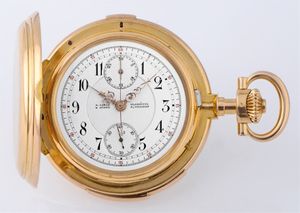
Savonnette with repeater and chronograph
A Lange watch is a complicated work of art, consisting of the style of the brand, our passion for craftsmanship and the unique technical and watchmaking skills of our employees. That was previously the case and we wanted to return to this tradition. I was the only person who knew the manufactory from the old days. I was the bridge to our history.
Does that mean that with each new watch you had to assess whether it met the principles of the brand?
Yes, of course. At the outset this normally meant: “Mr. Lange is again not happy with something.”
Where does your knowledge of watchmaking interrelationships come from?
Firstly, of course from my training as a watchmaker. Secondly, I absorbed the subject as a child. My father was in the habit of walking through the manufactory each evening and performing the final check. As far back as I can remember, I used to accompany him. Actually, it was clear to me from the start that I would learn the profession of watchmaking.
At the end of the war you were just 21 years old. Did you nevertheless go straight into managing your father's company?
My father Rudolf and his brothers Otto and Gerhard were in charge. After I finished my training, I progressed initially through various positions in the manufactory. However, my opinion was sought where there were important decisions affecting the future of our company.
Can you give us an example?
After the war the major issue was how to start up production again and what to produce. My two uncles argued in favour of making pocket watches again. However, it was clear to me that the future lay in wristwatches. In the end I managed to prevail because openness to modern developments was part of our identity.
By returning to traditional values did A. Lange & Söhne not run the risk of being labelled a backward-looking brand when it was re-established in 1990?
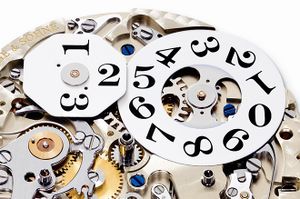
It was all the more important to us to make watches that in their simple, classic design were also ultra-modern. For example, look at the design and technology of the LANGE 1. Both the patented outsize date and the offset arrangement of the displays on the dial were revolutionary at the time they were launched.
Revolutions can fail though.
Which is why that day in October 1994, on which we presented our watches for the first time, was also the most exciting moment in my life.
Please explain.
Before we presented the watches to the public on 24 October, we showed them to the twelve most important jewellers from the German-speaking world.
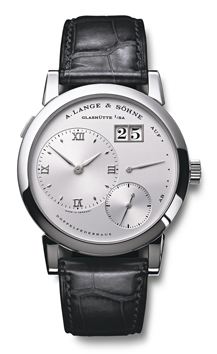
Up to this time we had made exactly 123 watches. What then happened was stunning. All of them gave their orders publicly that evening. We only had to ensure that they were shared out fairly. At the end only three watches remained, for which they drew lots using matchsticks.
Was that the moment when you knew that A. Lange & Söhne had won?
With the unanimous approval from these experts we knew that we had succeeded. However, at the time we had no idea how great the success would be in the coming years.
Do you feel that the success of the A. Lange & Söhne brand is the most important part of your life's work?
I am most proud of what has developed from this. Lange has not remained as the only company in Glashütte. The town of Glashütte has become the centre of the German watchmaking industry again. Over 1000 people have found work here and the region has been transformed into a “blooming landscape”. I can confidently assert that this would not have been possible without the successful rebirth of the A. Lange & Söhne brand. Lange was and remains the driving force of the region.
Do you still have an influence on the development of the company?
At the age of 85 I am no longer involved in the operational side of things. But A. Lange & Söhne is of course my child – and always will be.